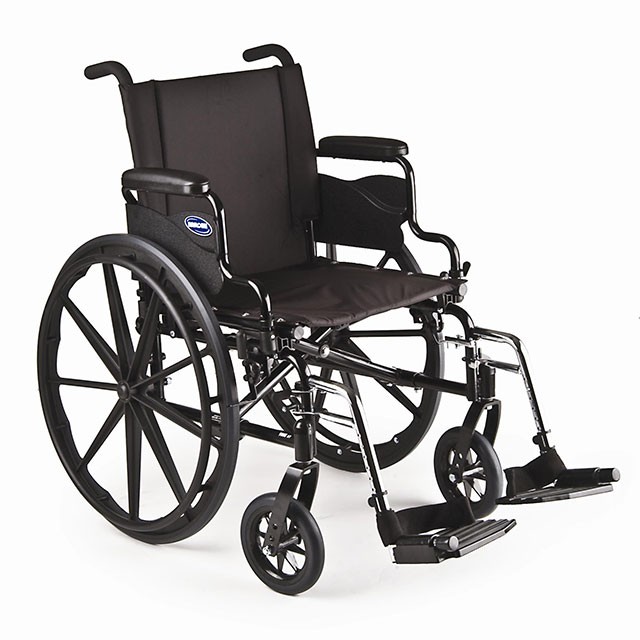Traveling in a wheelchair can be difficult, but it’s not impossible. Since I love seeing new sights, I put in the effort. But it’s no easy feat. Here’s how to do it:
1. Know thy battery. Upon checking in on any airline, I’m always asked what kind of battery fuels my electric wheelchair: wet or dry? I once made the mistake of saying, “I’m not sure,” which led to a 20-minute delay at the counter and much confusion. Eventually, after a discussion between five airline employees, a maintenance guy had to dissect my wheelchair before I could check in and move on to the gate, which is where I was asked the same question again by a different employee. And then again by two other employees.
2. Lean into the wait. My flight is longer than anyone else’s on the plane, except maybe the flight attendants. Because it takes some time for my wheelchair to get from the top of the gate to the plane’s
belly, I usually have the opportunity to board first. But because it takes just as long (and sometimes longer) for the chair to travel from the belly to the gate, I also depart last. I, too, want to scramble for my things and race off the plane upon arriving at my destination. However, I have to wait at least 20 more minutes and then meet up with everyone else at luggage pickup.
3. Do not hydrate. No wheelchair person, at least not me, ever uses the tiny bathroom in an airplane. The transferring alone would cause a scene, let alone maneuvering through the aisle and bathroom door and finally onto the toilet. So, contrary to popular wisdom, I do not drink much
before flights.
4. Hope for good neighbors. Non-wheelchair passengers can visit the bathroom easily. Thus, they drink freely and to excess, which obviously makes me envious. But, since I must be lifted into my assigned seating, I am forced to sit on the aisle, and I can only hope my neighbors saw my wheelchair pre-boarding. If not, it can be difficult to explain to strangers why I won’t stand up and they must straddle me in order to get to their seat. And then straddle me again when they go to the bathroom.
5. Ask for help. I’ll admit, I am a diva when traveling alone, but it’s only because as a quadriplegic I can’t do a lot of things for myself. So I’m all, “Can you grab my bag?” and “Will you plug my headphones in?” and “Can you switch the channel?” Bless the strangers who are assigned to sit next to me, especially upon landing. Since I have no torso control and pilots must slam on the brakes, I have to ask, “Can you hold me while we land?”
6. Anticipate problems. I have trained myself to have anxiety upon any landing. I can’t help but think, Did my wheelchair make it? It doesn’t matter if I sensed its boarding, or even if the flight attendant tells me my chair was successfully boarded; for the first few minutes after landing, I worry about what to do if it didn’t. When it arrives, the joy of being reunited with my machinery washes away the anxiety for a second, and then I must inspect for damages. Scratches are no big deal; disconnected wires are.
After arriving at my destination, the anxiety continues: I have to arrange accessible transportation and accommodations. But I expect the unexpected. It’s what traveling is all about – thrills and new experiences.
Jana Waring is a writer who moved from Orlando to Los Angeles in 2012. She blogs at waringis.com about her love of big-city living, funny problems and earnest stories about her C5-6 quadriplegic injury.


